
|
Great comet. It approached to Sun down to 0.29 a.u. on July 3, and it brightened up to 0.6 mag (Alan Hale). Now it is fading. But it is still very bright as 3.9 mag (July 24, Marco Goiato). It is appearing in the evening sky soon also in the Southern Hemisphere. It stays observable in the evening sky until early October when it fades down to 13 mag.
Date(TT) R.A. (2000) Decl. Delta r Elong. m1 Best Time(A, h)
July 25 11 3.95 41 31.1 0.697 0.674 41 4.2 20:47 (124, 24)
Aug. 1 12 32.26 27 45.6 0.793 0.827 52 5.5 20:39 (103, 30)
|
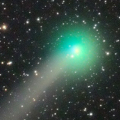
|
It brightened up to 6.0 mag in June (June 13, Marco Goiato). Now it is fading. But it is still bright as 9.0 mag (July 23, Marco Goiato). It stays observable in good condition for a long time after this.
Date(TT) R.A. (2000) Decl. Delta r Elong. m1 Best Time(A, h)
July 25 12 53.56 14 29.2 1.041 1.115 65 8.8 20:47 ( 86, 32)
Aug. 1 13 25.63 17 14.7 1.145 1.187 66 9.6 20:39 ( 87, 36)
|

|
Now it is bright as 9.2 mag (July 23, Marco Goiato). In the Southern Hemisphere, it stays observable in good condition in the evening sky while the comet will be fading. In the Northern Hemisphere, it is not observable until mid August when the comet will fade down to 12 mag.
Date(TT) R.A. (2000) Decl. Delta r Elong. m1 Best Time(A, h)
July 25 11 3.33 -8 33.3 0.637 0.773 49 9.6 20:47 ( 81, -4)
Aug. 1 12 7.37 -17 13.5 0.624 0.896 60 10.5 20:39 ( 68, 0)
|
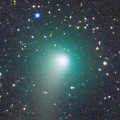
|
Now it is 10.4 mag (July 21, Chris Wyatt). It stays observable in the evening sky until September when it fades down to 12 mag.
Date(TT) R.A. (2000) Decl. Delta r Elong. m1 Best Time(A, h)
July 25 13 15.62 24 2.6 2.071 1.942 68 9.8 20:47 ( 93, 40)
Aug. 1 13 26.89 19 34.0 2.175 1.993 66 10.0 20:39 ( 89, 37)
|
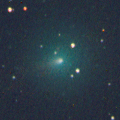
|
Now it is 10.2 mag (July 21, Chris Wyatt). It will brighten up to 8-9 mag from summer to autumn. It will be observable in excellent condition in the Southern Hemisphere. It locates very low around the high light in the Northern Hemisphere.
Date(TT) R.A. (2000) Decl. Delta r Elong. m1 Best Time(A, h)
July 25 13 31.51 -10 32.6 1.266 1.521 82 10.3 20:47 ( 57, 23)
Aug. 1 13 45.29 -12 14.0 1.281 1.488 79 10.1 20:39 ( 57, 21)
|

|
Recovered from SWAN images after 24-year blank. It brightened up to 10.2 mag in spring (May 31, Marco Goiato). Now it is fading. But it is still bright as 12.4 mag (July 20, Paul Camilleri). It stays observable for a long time after this until the comet fades out.
Date(TT) R.A. (2000) Decl. Delta r Elong. m1 Best Time(A, h)
July 25 4 48.94 13 17.6 1.975 1.540 50 12.4 3:24 (265, 17)
Aug. 1 5 7.74 13 13.9 1.974 1.577 52 12.7 3:32 (268, 20)
|
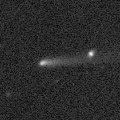
|
Now it is 14.8 mag (July 25, Martin Masek). It was expected to brighten rapidly up to 9.5 mag in June. But actually, it is fainter than predicted. However, it became very bright as 7.5 mag in SOHO spacecraft images on June 19 (Karl Battams). It is observable in good condition after this while the comet will be fading.
Date(TT) R.A. (2000) Decl. Delta r Elong. m1 Best Time(A, h)
July 25 5 25.08 26 52.0 1.100 0.731 40 13.5 3:24 (249, 17)
Aug. 1 5 41.15 26 18.9 1.197 0.833 43 14.6 3:32 (252, 20)
|

|
Now it is 14.1 mag (July 25, Martin Masek).
Date(TT) R.A. (2000) Decl. Delta r Elong. m1 Best Time(A, h)
July 25 2 44.70 25 26.1 5.977 5.814 75 13.6 3:24 (270, 48)
Aug. 1 2 47.42 25 48.6 5.872 5.816 81 13.6 3:32 (274, 55)
|
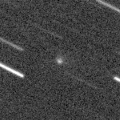
|
Now it is 15.5 mag (July 22, Martin Masek). Small comet. But it will approach to Sun down to 0.47 a.u. in September, and it is expected to brighten up to 11 mag. It stays observable in good condition until late August while the comet will be brightening up to 11 mag.
Date(TT) R.A. (2000) Decl. Delta r Elong. m1 Best Time(A, h)
July 25 2 0.15 31 22.7 0.806 1.223 83 14.4 3:24 (267, 60)
Aug. 1 2 58.96 32 17.7 0.696 1.102 77 13.6 3:32 (262, 56)
|

|
It brightened up to 4.7 mag in early May (May 2, Marco Goiato). However, it is fading and getting diffused after that. It had already faded down to 7.3 mag in late May (May 21, Mitsunori Tsumura). It will appear in the morning sky soon. Then it stays observable in good condition.
Date(TT) R.A. (2000) Decl. Delta r Elong. m1 Best Time(A, h)
July 25 6 35.10 23 24.8 2.217 1.356 24 13.8 3:24 (242, 2)
Aug. 1 6 39.03 21 25.2 2.266 1.476 29 14.2 3:32 (248, 7)
|
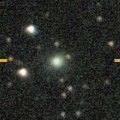
|
Now it is 13.5 mag (July 10, Giuseppe Pappa). It is expected to brighten up to 12 mag from autumn to winter. In the Northern Hemisphere, it stays observable in good condition while the comet will be brightening gradually, but it is hardly observable at the high light. In the Southern Hemisphere, it is not observable for a long time, but it will be observable in good condition after the high light.
Date(TT) R.A. (2000) Decl. Delta r Elong. m1 Best Time(A, h)
July 25 12 4.94 43 41.5 2.849 2.375 52 13.9 20:47 (123, 34)
Aug. 1 12 9.06 40 0.1 2.856 2.317 48 13.8 20:39 (120, 30)
|

|
Now it is 13.9 mag (July 10, Giuseppe Pappa). It stays 14 mag until autumn. In the Southern Hemisphere, it will never be observable again.
Date(TT) R.A. (2000) Decl. Delta r Elong. m1 Best Time(A, h)
July 25 8 47.30 85 17.8 4.276 3.967 65 14.3 20:47 (175, 32)
Aug. 1 10 31.82 84 17.9 4.295 4.007 66 14.3 20:39 (173, 34)
|
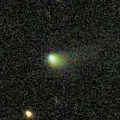
|
Now it is 14.2 mag (July 16, Paul Camilleri). It stays 13-14 mag from 2020 to 2021. It will be unobservable in September.
Date(TT) R.A. (2000) Decl. Delta r Elong. m1 Best Time(A, h)
July 25 12 58.76 6 9.7 3.288 3.080 69 14.3 20:47 ( 77, 27)
Aug. 1 13 5.28 4 54.0 3.360 3.067 64 14.3 20:39 ( 78, 24)
|

|
It was expected to brighten very rapidly, and brighten up to 14.5 mag from August to September. However, its current brightness is very uncertain. It could not be detected as fainter than 18.0 mag on June 30 (Charles S. Morris), and fainter than 15.7 mag on July 13 (Sandor Szabo). However, Thomas Lehmann reported it is bright as 15.3 mag on June 25, and Giuseppe Pappa reported as 14 mag on July 10. In the Northern Hemisphere, it stays observable for a long time, although it becomes extremely low in early September. In the Southern Hemisphere, it is not observable until late October.
Date(TT) R.A. (2000) Decl. Delta r Elong. m1 Best Time(A, h)
July 25 9 46.48 77 53.8 1.224 1.121 59 14.9 20:47 (166, 30)
Aug. 1 10 16.31 69 17.2 1.291 1.061 53 14.8 20:39 (157, 27)
|
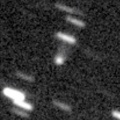
|
Now it is 15.4 mag (July 9, R. Carstens). It will brighten up to 13 mag in 2021. In the Northern Hemisphere, it will be unobservable soon. In the Southern Hemisphere, it stays observable at 15 mag until October.
Date(TT) R.A. (2000) Decl. Delta r Elong. m1 Best Time(A, h)
July 25 13 50.76 -24 8.2 4.503 4.651 92 14.9 20:47 ( 44, 16)
Aug. 1 13 51.81 -24 40.4 4.574 4.614 85 14.9 20:39 ( 47, 12)
|
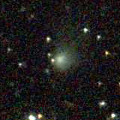
|
Now it is 15.0 mag (July 12, Sandor Szabo). It is expected to be observable at 5-6 mag for a long time from 2022 to 2023. In the Northern Hemisphere, it is not observable at the high light from 2022 summer to 2023 summer. In the Southern Hemisphere, it is only visible in the extremely low sky in summer in 2020. But it will be observable in good condition at the high light.
Date(TT) R.A. (2000) Decl. Delta r Elong. m1 Best Time(A, h)
July 25 17 17.24 51 11.0 8.434 8.649 98 15.0 21:02 (180, 74)
Aug. 1 17 13.68 50 29.2 8.410 8.597 97 15.0 20:39 (175, 75)
|
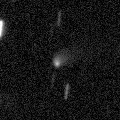
|
Now it is 15.9 mag (July 8, iTelescope Observatory, Siding Spring). It stays 14-15 mag until 2021. In the Southern Hemisphere, it stays observable in good condition for a long time. In the Northern Hemisphere, it is not observable until June in 2021.
Date(TT) R.A. (2000) Decl. Delta r Elong. m1 Best Time(A, h)
July 25 14 42.76 -80 31.0 4.311 4.762 110 15.3 20:47 ( 6,-27)
Aug. 1 14 53.51 -79 43.3 4.324 4.738 108 15.2 20:39 ( 7,-27)
|

|
Now it is 15.2 mag (July 3, R. Carstens). It will brighten up to 13.5 mag in spring in 2021. In the Southern Hemisphere, it stays observable in good condition for a long time. In the Northern Hemisphere, it is not observable until spring in 2021.
Date(TT) R.A. (2000) Decl. Delta r Elong. m1 Best Time(A, h)
July 25 20 14.35 -66 14.2 3.398 4.162 133 15.3 0:06 ( 0,-11)
Aug. 1 19 42.20 -66 20.9 3.393 4.125 130 15.3 22:58 ( 0,-11)
|
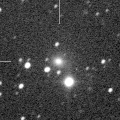
|
It brightened up to 13.5 mag in winter (Dec. 6, Chris Wyatt). Now it is fading slowly. Now it is 15.8 mag (June 14, SONEAR Observatory, Oliveira). In the Southern Hemisphere, it stays observable for a long time. In the Northern Hemisphere, it will appear in the morning sky soon, but it stays low for a while.
Date(TT) R.A. (2000) Decl. Delta r Elong. m1 Best Time(A, h)
July 25 3 25.05 -35 2.9 3.951 4.051 88 15.3 3:24 (316, 2)
Aug. 1 3 24.87 -35 18.1 3.909 4.084 92 15.3 3:32 (322, 6)
|

|
Now it is 15.5 mag (July 9, Sandor Szabo). It stays 15-16 mag for a long time until 2021.
Date(TT) R.A. (2000) Decl. Delta r Elong. m1 Best Time(A, h)
July 25 19 29.84 19 0.5 3.664 4.486 139 15.3 23:14 ( 0, 74)
Aug. 1 19 19.94 19 33.1 3.694 4.490 136 15.4 22:37 ( 0, 75)
|
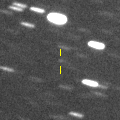
|
Now it is 15.2 mag (July 12, Sandor Szabo). It is observable at 15-16 mag in good condition from June to August.
Date(TT) R.A. (2000) Decl. Delta r Elong. m1 Best Time(A, h)
July 25 19 11.45 -2 41.2 1.086 2.057 156 15.4 22:57 ( 0, 52)
Aug. 1 19 9.60 -3 39.4 1.103 2.057 152 15.4 22:28 ( 0, 51)
|
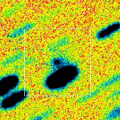
|
Now it is 16.1 mag (June 29, ATLAS-HKO, Haleakala). It brightens up to 13.5 mag in winter. But it is not observable at high light. In the Southern Hemisphere, it stays observable in good condition until autumn when the comet will brighten up to 14 mag. It stays locating very low in the Northern Hemisphere.
Date(TT) R.A. (2000) Decl. Delta r Elong. m1 Best Time(A, h)
July 25 17 59.95 -44 9.0 1.718 2.597 142 15.7 21:46 ( 0, 11)
Aug. 1 17 55.40 -43 1.8 1.737 2.569 136 15.5 21:14 ( 0, 12)
|

|
Now it is 14.9 mag (July 9, Sandor Szabo). It will brighten up to 12 mag in winter in 2022. In the Northern Hemisphere, it stays observable in good condition for a long time. In the Southern Hemisphere, it is not observable until 2021 November.
Date(TT) R.A. (2000) Decl. Delta r Elong. m1 Best Time(A, h)
July 25 0 54.16 59 17.4 5.856 5.825 83 15.7 3:24 (202, 62)
Aug. 1 0 55.64 60 17.4 5.743 5.781 87 15.6 3:32 (193, 64)
|

|
Now it is 15.2 mag (July 9, ATLAS-MLO, Mauna Loa). It is observable at 15-16 mag in 2020. It is observable in excellent condition in the Southern Hemisphere. It locates somewhat low in the Northern Hemisphere.
Date(TT) R.A. (2000) Decl. Delta r Elong. m1 Best Time(A, h)
July 25 18 40.49 -28 31.4 5.825 6.766 156 15.7 22:26 ( 0, 27)
Aug. 1 18 33.53 -28 11.5 5.898 6.781 148 15.7 21:51 ( 0, 27)
|

|
Now it is 15.6 mag (July 13, D. L. Feltenberger, N. Paul). It stays 15.5 mag from summer to winter, and observable in good condition. It locates somewhat low in the Southern Hemisphere.
Date(TT) R.A. (2000) Decl. Delta r Elong. m1 Best Time(A, h)
July 25 5 16.36 18 38.4 2.391 1.784 42 15.9 3:24 (257, 14)
Aug. 1 5 34.27 19 1.9 2.368 1.803 45 15.8 3:32 (259, 18)
|
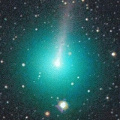
|
It brightened up to 8 mag from March to April. It continued brightening for a while even after the perihelion passage on Mar. 15. But it is fading now. It is still visible visually as 13.0 mag (July 12, Sandor Szabo). However, it has already faded down to 17.0 mag by CCD (July 2, Charles S. Morris). It seems to be a fragment of C/1988 A1 (Liller), like C/1996 Q1 (Tabur) and C/2015 F3 (SWAN).
Date(TT) R.A. (2000) Decl. Delta r Elong. m1 Best Time(A, h)
July 25 12 32.88 11 51.1 2.596 2.292 61 15.9 20:47 ( 86, 25)
Aug. 1 12 39.64 9 14.9 2.770 2.381 57 16.4 20:39 ( 86, 21)
|

|
Now it is 15.8 mag (July 9, Sandor Szabo). It will stay at 15 mag for a long time from 2021 to 2022. In the Northern Hemisphere, it stays observable in good condition while brightening gradually. In the Southern Hemisphere, it stays locating low for a long time.
Date(TT) R.A. (2000) Decl. Delta r Elong. m1 Best Time(A, h)
July 25 17 55.38 30 2.3 5.544 6.110 119 16.1 21:40 ( 0, 85)
Aug. 1 17 49.68 28 53.1 5.556 6.081 116 16.1 21:07 ( 0, 84)
|
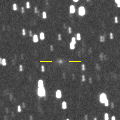
|
Now it is 16.6 mag (July 5, ATLAS-HKO, Haleakala). It will brighten up to 16.5 mag and will be observable in good condition from June to October.
Date(TT) R.A. (2000) Decl. Delta r Elong. m1 Best Time(A, h)
July 25 20 25.84 17 26.5 1.276 2.174 142 16.4 0:15 ( 0, 73)
Aug. 1 20 22.09 17 12.7 1.258 2.165 144 16.4 23:40 ( 0, 72)
|
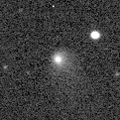
|
It brightened up to 13.8 mag in autumn in 2019 (Sept. 3, Chris Wyatt). Now it is fading slowly. Now it is 15.9 mag (July 8, ATLAS-HKO, Haleakala). In 2020, it stays observable in good condition while the comet will be fading from 16 to 17 mag.
Date(TT) R.A. (2000) Decl. Delta r Elong. m1 Best Time(A, h)
July 25 0 38.31 0 30.7 5.480 5.953 113 16.4 3:24 (333, 53)
Aug. 1 0 36.56 0 47.2 5.419 5.994 120 16.4 3:32 (348, 55)
|

|
Now it is 16.8 mag (July 2, R. Carstens). It brightens up to 16 mag from summer to winter. In the Southern Hemisphere, it is observable in excellent condition. In the Northern Hemisphere, it is not observable until late October.
Date(TT) R.A. (2000) Decl. Delta r Elong. m1 Best Time(A, h)
July 25 22 26.98 -67 18.7 1.142 1.941 128 16.6 2:17 ( 0,-12)
Aug. 1 22 18.95 -68 50.9 1.098 1.892 127 16.5 1:41 ( 0,-14)
|

|
Now it is 16.7 mag (July 1, ATLAS-HKO, Haleakala). It will be observable at 16.5-17 mag from spring in 2020 to summer in 2021.
Date(TT) R.A. (2000) Decl. Delta r Elong. m1 Best Time(A, h)
July 25 18 4.13 18 29.5 3.990 4.704 129 16.6 21:49 ( 0, 73)
Aug. 1 17 55.10 17 2.5 4.034 4.695 125 16.6 21:13 ( 0, 72)
|

|
It brightened up to 13.2 mag from spring to autumn in 2019 (June 30, Thomas Lehmann). Now it is fading slowly. It has already faded down to 16.3 mag (July 3, ATLAS-HKO, Haleakala). In the Southern Hemisphere, it stays observable for a long time. In the Northern Hemisphere, it stays low for a long time.
Date(TT) R.A. (2000) Decl. Delta r Elong. m1 Best Time(A, h)
July 25 23 50.66 -30 45.8 3.651 4.386 131 16.6 3:24 (356, 24)
Aug. 1 23 43.84 -30 54.6 3.622 4.426 137 16.7 3:05 ( 0, 24)
|

|
Now it is 17.0 mag (July 12, ATLAS-HKO, Haleakala). It will brighten up to 14.5 mag from spring to summer in 2021. In the Southern Hemisphere, it stays observable in excellent condition for a long time. In the Northern Hemisphere, it is observable in good condition in 2020, however, it will be unobservable in 2021.
Date(TT) R.A. (2000) Decl. Delta r Elong. m1 Best Time(A, h)
July 25 23 8.78 4 39.3 3.075 3.824 131 16.8 2:58 ( 0, 60)
Aug. 1 23 2.93 2 56.2 2.940 3.776 140 16.7 2:25 ( 0, 58)
|
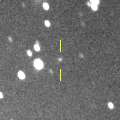
|
Now it is 15.9 mag (Apr. 24, J. Drummond). It is expected to brighten up to 13 mag in 2022. In 2020, it is observable in excellent condition in the Southern Hemisphere. In the Northern Hemisphere, it is not observable. It will be observable from autumn to winter, but it locating extremely low.
Date(TT) R.A. (2000) Decl. Delta r Elong. m1 Best Time(A, h)
July 25 7 25.01 -25 48.6 7.523 6.874 47 16.8 3:24 (279,-36)
Aug. 1 7 30.63 -26 4.9 7.475 6.834 47 16.7 3:32 (282,-30)
|
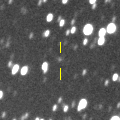
|
Now it is 17.5 mag (July 11, Jean-Francois Soulier). It will be observable at 16.5-17 mag from 2020 to 2021. In the Southern Hemisphere, it is not observable until summer in 2021.
Date(TT) R.A. (2000) Decl. Delta r Elong. m1 Best Time(A, h)
July 25 1 49.95 72 35.3 6.359 6.145 73 17.0 3:24 (195, 49)
Aug. 1 1 41.14 73 13.2 6.276 6.133 77 16.9 3:32 (190, 50)
|
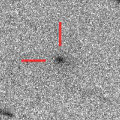
|
Now it is 18.3 mag (June 28, Jean-Benoit de Vanssay). It brightens up to 16 mag in September. It is observable in good condition in the Northern Hemisphere. It locates low in the Southern Hemisphere.
Date(TT) R.A. (2000) Decl. Delta r Elong. m1 Best Time(A, h)
July 25 4 0.31 19 2.0 1.425 1.277 60 17.3 3:24 (267, 30)
Aug. 1 4 27.65 20 23.2 1.406 1.266 60 17.0 3:32 (267, 32)
|
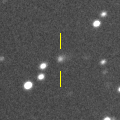
|
Now it is 17.1 mag (July 2, ATLAS-MLO, Mauna Loa). It stays observable at 16-17 mag from 2020 to 2021. It locates somewhat low in the Northern Hemisphere.
Date(TT) R.A. (2000) Decl. Delta r Elong. m1 Best Time(A, h)
July 25 11 16.50 -14 46.8 7.121 6.603 55 17.0 20:47 ( 76, -5)
Aug. 1 11 21.33 -14 47.0 7.206 6.607 50 17.0 20:39 ( 78, -8)
|

|
Now it is 18.7 mag (July 13, ATLAS-MLO, Mauna Loa). It is expected to brighten up to 15 mag from October to November, and it will be observable in excellent condition.
Date(TT) R.A. (2000) Decl. Delta r Elong. m1 Best Time(A, h)
July 25 23 59.63 -33 56.5 1.030 1.848 129 17.2 3:24 (355, 21)
Aug. 1 0 6.13 -34 43.3 0.950 1.800 132 17.0 3:27 ( 0, 20)
|
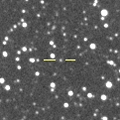
|
Now it is 16.9 mag (July 3, ATLAS-MLO, Mauna Loa). It stays at 17 mag from 2020 to 2021.
Date(TT) R.A. (2000) Decl. Delta r Elong. m1 Best Time(A, h)
July 25 19 23.14 32 3.8 8.273 8.916 126 17.1 23:08 ( 0, 87)
Aug. 1 19 19.03 32 11.2 8.280 8.910 125 17.1 22:36 ( 0, 87)
|

|
Now it is 17.4 mag (July 13, ATLAS-MLO, Mauna Loa). It will brighten up to 14 mag in November, and will be observable in excellent condition.
Date(TT) R.A. (2000) Decl. Delta r Elong. m1 Best Time(A, h)
July 25 1 13.57 -33 45.0 1.173 1.836 113 17.5 3:24 (339, 18)
Aug. 1 1 31.92 -34 25.7 1.082 1.769 114 17.1 3:32 (343, 18)
|

|
It will pass the perihelion in 2021, and it was predicted to be observable at 17-18 mag from 2020 to 2022. However, it has not been observed at all since 2015. It was not detected, fainter than 20.5 mag, in 2017 May (Werner Hasubick).
Date(TT) R.A. (2000) Decl. Delta r Elong. m1 Best Time(A, h)
July 25 20 27.34 -22 22.9 4.922 5.936 176 17.2 0:17 ( 0, 33)
Aug. 1 20 24.49 -22 27.7 4.915 5.925 173 17.2 23:42 ( 0, 33)
|
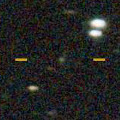
|
Now it is 17.1 mag (July 6, ATLAS-MLO, Mauna Loa). It became brighter than orignally predicted. It stays observable at 17 mag in good condition until autumn.
Date(TT) R.A. (2000) Decl. Delta r Elong. m1 Best Time(A, h)
July 25 13 29.11 -14 11.3 1.979 2.122 83 17.3 20:47 ( 55, 20)
Aug. 1 13 39.89 -15 18.4 2.042 2.113 79 17.3 20:39 ( 56, 17)
|

|
It brightened up to 7.7 mag in June in 2018 (June 19, Juan Jose Gonzalez). Now it is fading. It has already faded down to 16.9 mag (Apr. 22, J. Drummond). In the Southern Hemisphere, it stays observable for a long time until the comet will fade out. It will be observable in good condition after late August also in the Northern Hemisphere.
Date(TT) R.A. (2000) Decl. Delta r Elong. m1 Best Time(A, h)
July 25 6 24.58 -10 3.8 7.961 7.222 40 17.3 3:24 (271,-16)
Aug. 1 6 27.45 -10 6.0 7.968 7.275 44 17.3 3:32 (276, -9)
|

|
First return of a new periodic comet which brightened up to 17.5 mag in 2012. Now it is 17.6 mag (June 30, Hidetaka Sato). It stays observable at 17 mag in good condition from summer to winter. It locates somewhat low in the Southern Hemisphere.
Date(TT) R.A. (2000) Decl. Delta r Elong. m1 Best Time(A, h)
July 25 3 38.34 23 57.4 2.539 2.292 64 17.4 3:24 (265, 37)
Aug. 1 3 50.56 25 5.9 2.474 2.298 68 17.4 3:32 (266, 42)
|

|
It brightened up to 12-13 mag from 2018 to 2019. Now it is fading. It has already faded down to 17.7 mag (July 3, P. Camilleri, H. Williams). In the Southern Hemisphere, it stays observable in good condition for a long time. It will never be observable after this in the Northern Hemisphere.
Date(TT) R.A. (2000) Decl. Delta r Elong. m1 Best Time(A, h)
July 25 9 35.41 -56 39.1 6.035 5.909 78 17.6 20:47 ( 42,-40)
Aug. 1 9 39.55 -56 24.1 6.132 5.956 75 17.7 20:39 ( 42,-42)
|
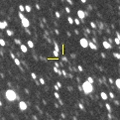
|
Sam Deen pointed out that it brightened in outburst twice in 2017 and 2019. It was observed at 20-21 mag in 2017. Then it became fainter than 22.9 mag in 2018 summer (Aug. 29, Sam Deen). However, it brightened up to 17.2 mag in 2019 spring (Mar. 25, B. T. Bolin). Then it faded again down to 19.9 mag (May 29, Toshihiko Ikemura, Hirohisa Sato). Now it is 18.1 mag (July 9, J. Jahn). It is predicted to stay observable at 18 mag for a long time from 2019 to 2021. But actually, it may be fainter than this ephemeris.
Date(TT) R.A. (2000) Decl. Delta r Elong. m1 Best Time(A, h)
July 25 18 41.00 -22 57.2 6.770 7.717 157 17.6 22:27 ( 0, 32)
Aug. 1 18 37.59 -23 31.1 6.828 7.721 149 17.7 21:56 ( 0, 31)
|

|
Now it is 18.8 mag (July 18, Jost Jahn). It will brighten up to 17.5 mag in autumn. It is observable in excellent condition in the Southern Hemisphere. It locates very low in the Northern Hemisphere.
Date(TT) R.A. (2000) Decl. Delta r Elong. m1 Best Time(A, h)
July 25 23 32.43 -23 3.5 2.359 3.158 134 17.7 3:21 ( 0, 32)
Aug. 1 23 32.62 -24 36.4 2.303 3.154 140 17.7 2:54 ( 0, 31)
|

|
Now it is 17.2 mag (July 9, ATLAS-MLO, Mauna Loa). It will brighten up to 15.5 mag in early 2021. In 2020, it stays observable at 17 mag until November in the Southern Hemisphere. In the Northern Hemisphere, it will be unobservable soon. Then it stays unobservable until 2021 June.
Date(TT) R.A. (2000) Decl. Delta r Elong. m1 Best Time(A, h)
July 25 14 3.25 -28 44.1 2.672 2.959 96 17.7 20:47 ( 39, 14)
Aug. 1 14 7.36 -28 38.2 2.710 2.904 90 17.7 20:39 ( 42, 12)
|
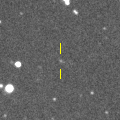
|
Now it is 17.5 mag (June 28, Ken-ichi Kadota). It stays 18 mag from 2019 to 2020.
Date(TT) R.A. (2000) Decl. Delta r Elong. m1 Best Time(A, h)
July 25 21 11.70 -5 19.0 3.618 4.589 160 17.7 1:01 ( 0, 50)
Aug. 1 21 8.33 -5 39.3 3.597 4.590 166 17.7 0:30 ( 0, 49)
|
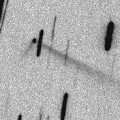
|
Main-belt asteroid. But it showed a straight tail like a comet in 2019. In 2020, it brightens up to 16.5 mag and stays observable in good condition from September to October.
Date(TT) R.A. (2000) Decl. Delta r Elong. m1 Best Time(A, h)
July 25 0 35.19 14 2.0 1.587 2.137 108 17.9 3:24 (323, 65)
Aug. 1 0 38.72 13 36.9 1.525 2.152 114 17.7 3:32 (342, 68)
|

|
Now it is 18.0 mag (July 2, A. Diepvens). It will be fading slowly after this. It is observable in good condition in the Northern Hemisphere. In the Southern Hemisphere, it is observable in the extremely low sky only in 2021 spring.
Date(TT) R.A. (2000) Decl. Delta r Elong. m1 Best Time(A, h)
July 25 12 43.90 45 5.9 9.440 8.971 59 17.8 20:47 (122, 41)
Aug. 1 12 46.34 44 14.1 9.508 8.985 56 17.8 20:39 (122, 38)
|

|
Now it is 18.2 mag (Apr. 27, iTelescope Observatory, Siding Spring). It stays 17 mag for a long time until 2027. It is observable in good condition in the Southern Hemisphere. It is not observable in the Northern Hemisphere.
Date(TT) R.A. (2000) Decl. Delta r Elong. m1 Best Time(A, h)
July 25 9 40.30 -42 55.8 12.514 12.126 65 17.8 20:47 ( 59,-37)
Aug. 1 9 42.46 -43 4.0 12.543 12.107 62 17.8 20:39 ( 60,-40)
|
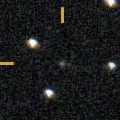
|
It is observable at 17-18 mag for a long time from late 2019 to early 2021. It will fade out before it passes the perihelion.
Date(TT) R.A. (2000) Decl. Delta r Elong. m1 Best Time(A, h)
July 25 5 14.38 15 37.9 5.390 4.709 43 17.9 3:24 (260, 13)
Aug. 1 5 20.58 15 47.8 5.302 4.698 48 17.8 3:32 (264, 19)
|

|
It has not been observed yet in this apparition. It will brighten up to 17.5 mag in September. It is observable in excellent condition in the Southern Hemisphere. It locates somewhat low in the Northern Hemisphere.
Date(TT) R.A. (2000) Decl. Delta r Elong. m1 Best Time(A, h)
July 25 23 13.63 -6 10.8 1.192 2.043 135 18.0 3:02 ( 0, 49)
Aug. 1 23 16.99 -7 43.2 1.134 2.031 141 17.9 2:38 ( 0, 47)
|

|
Fragment of C/1844 Y1 (Great Comet). It brightened up to 7.0 mag in late March ((Mar. 30, Charles S. Morris). But the nucleus was split into some fragments, and it faded out after that. In the Northern Hemisphere, it is not observable after this. In the Southern Hemisphere, it is appearing in the morning sky, but it locates extremely low.
Date(TT) R.A. (2000) Decl. Delta r Elong. m1 Best Time(A, h)
July 25 6 31.63 1 36.6 2.136 1.379 31 19.5 3:24 (261,-10)
Aug. 1 6 42.88 1 5.4 2.229 1.507 34 20.0 3:32 (265, -6)
|
|
![]()
 C/2019 F1 ( ATLAS-Africano )
C/2019 F1 ( ATLAS-Africano ) C/2017 K2 ( PanSTARRS )
C/2017 K2 ( PanSTARRS ) C/2020 F5 ( MASTER )
C/2020 F5 ( MASTER ) C/2020 J1 ( SONEAR )
C/2020 J1 ( SONEAR ) C/2018 F4 ( PanSTARRS )
C/2018 F4 ( PanSTARRS ) C/2019 K7 ( Smith )
C/2019 K7 ( Smith ) 115P/Maury
115P/Maury 17P/Holmes
17P/Holmes C/2019 L3 ( ATLAS )
C/2019 L3 ( ATLAS ) C/2017 U7 ( PanSTARRS )
C/2017 U7 ( PanSTARRS ) 84P/Giclas
84P/Giclas C/2019 Y1 ( ATLAS )
C/2019 Y1 ( ATLAS ) C/2018 U1 ( Lemmon )
C/2018 U1 ( Lemmon ) 257P/Catalina
257P/Catalina C/2017 B3 ( LINEAR )
C/2017 B3 ( LINEAR ) 162P/Siding Spring
162P/Siding Spring C/2017 Y2 ( PanSTARRS )
C/2017 Y2 ( PanSTARRS ) C/2018 A6 ( Gibbs )
C/2018 A6 ( Gibbs ) C/2019 T2 ( Lemmon )
C/2019 T2 ( Lemmon ) C/2019 T4 ( ATLAS )
C/2019 T4 ( ATLAS ) C/2019 T3 ( ATLAS )
C/2019 T3 ( ATLAS ) 304P/Ory
304P/Ory C/2019 C1 ( ATLAS )
C/2019 C1 ( ATLAS ) 156P/Russell-LINEAR
156P/Russell-LINEAR C/2019 O3 ( Palomar )
C/2019 O3 ( Palomar ) C/2020 M3 ( ATLAS )
C/2020 M3 ( ATLAS ) C/2014 F3 ( Sheppard-Trujillo )
C/2014 F3 ( Sheppard-Trujillo ) 278P/McNaught
278P/McNaught C/2016 M1 ( PanSTARRS )
C/2016 M1 ( PanSTARRS ) P/2020 M2 ( Lemmon )
P/2020 M2 ( Lemmon ) C/2017 M4 ( ATLAS )
C/2017 M4 ( ATLAS ) C/2017 K5 ( PanSTARRS )
C/2017 K5 ( PanSTARRS ) 254P/McNaught
254P/McNaught 28P/Neujmin 1
28P/Neujmin 1 P/2019 LD2 ( ATLAS )
P/2019 LD2 ( ATLAS ) (6478) Gault
(6478) Gault C/2010 U3 ( Boattini )
C/2010 U3 ( Boattini ) C/2019 E3 ( ATLAS )
C/2019 E3 ( ATLAS ) 173P/Mueller 5
173P/Mueller 5 312P/NEAT
312P/NEAT C/2019 Y4 ( ATLAS )
C/2019 Y4 ( ATLAS )![]()









































